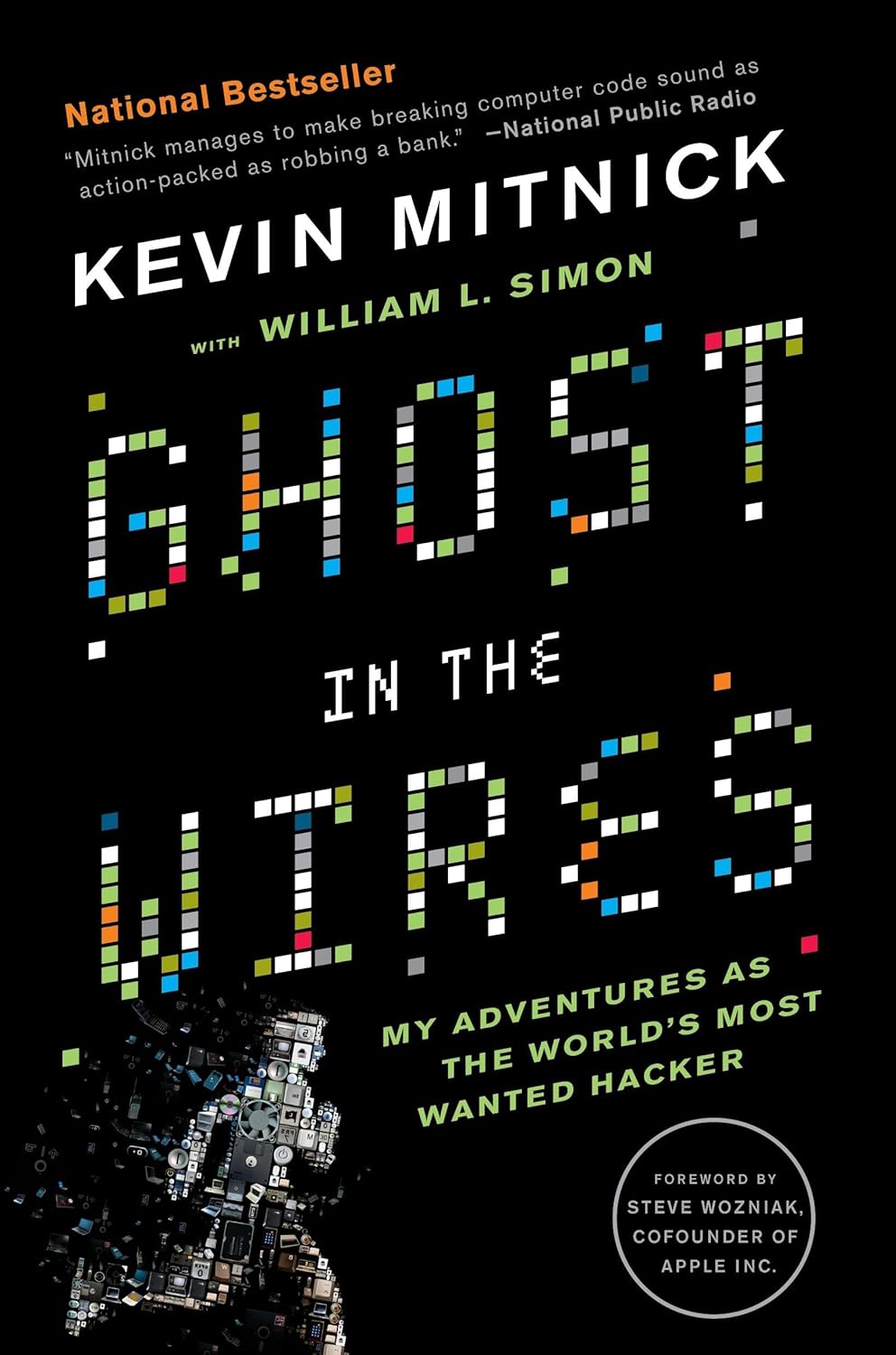Ghost in the Wires by Kevin Mitnick
My Adventures as the World’s Most Wanted Hacker
Background
When I worked at iDirect, we used a tool to simulate phishing called Knowbe4. This was a service created by Kevin Mitnick. His name comes up whenever people talk about famous hackers.
Main Ideas
Ch. 1: Kevin Mitnick grew up with an interest in magic and manipulation. Kevin as an only child that moved constantly. He became fascinated by magic and deception when his neighbor showed him a magic trick. He learned social engineering and learning how to establish trust. Learning specific vocabulary allowed him to gain trust.
Ch. 2: Mitnick began his life as a hacker in the early 1980s, when he was still just a teenager. In the 80s digital records were popular, but security systems were simple. For example, he called the DMV pretending to be an officer. He learned that he needed a requester code in order to get information. He then called the police pretending to be from the DMV in order to get a requester code. He provided a fake code and the police station corrected him with the true code. Mitnick got into trouble with the FBI after using an administrative account from his friend’s father.
Ch. 3: Some unfortunate decisions by Mitnick’s friends led to his first arrest. He and a friend gained access to a leasing office. When his friend broke up with his girlfriend, she took the info and framed Kevin. He spent 3 months in juvenile detention.
Ch. 4: Mitnick’s hacking got him into further trouble in his 20s. He started to gain a reputation after an LA times article. After finishing classes at a tech school, he tried to get a job at a company testing their security. When they ran a background check and saw his history, he was fired. He was then caught hacking into a software company Santa Cruz Operations. The lawsuit was lessened when Mitnick cooperated with the company to reveal his hacking techniques.
Ch. 5: A mysterious meeting put Mitnick in danger of ending up in jail. Mitnick spent 4 months in jail. During that time his girlfriend cheated on him with his friend Louis. Mitnick came to learn of a new hacker named Eric Hines, but after spying on him he overheard a phone conversation revealing that he was an FBI agent planning to arrest Mitnick.
Ch. 6: Under FBI surveillance, Mitnick tried to stay one step ahead of the law. While under probation, he couldn’t travel. He kept his house clean knowing the FBI could search at any time. When they did come to search, he left a post-it note on the fridge mocking the FBI. After his probation was up, he fled to Las Vegas and changed his identity to Eric Weiss (the birth name of Harry Houdini).
Ch. 7: Mitnick’s life as a fugitive was full of fake identities and close calls. He carried all of his money on him, until it was stolen out of a gym locker. He moved to Denver and faked his references to get a job at a law firm, while continuing to hack on the side. While stealing source code from phone companies (Motorola, Nokia, and NEC), he intercepted an email from the FBI telling an NEC admin about a breach. This informed Mitnick that the FBI was still tracking him.
Ch. 8: Things began to go downhill for Mitnick after he got fired from his Denver job. Mitnick was fired by his company after they suspected he was consulting during lunch breaks. Kevin moved to Seattle and changed his name to Brian Merrill. Kevin became paranoid and frequently changed his phone number, which raised the suspicion of local authorities. Local authorities eventually forwarded the case to the FBI. In his effort to be elusive, it led to his capture. An old hacker friend turned FBI informant helped the agents track down Kevin and he was eventually arrested in North Carolina.
Ch. 9: The injustice in Mitnick’s trial resulted in the “Free Kevin” movement and a plea bargain. When Mitnick went to trial, the FBI was looking to make an example out of Kevin. Even though he never used the info for profit, they tried to give him maximum sentences. For example, they wanted to give 20 years for every cloned cell phone call, with 23 calls on record (460 years). The judge originally denied a bail hearing, and didn’t allow Kevin to review the evidence. The story went to newspapers which led to protests. The protests reduced the damages down to $4,125. Kevin took the deal and spent 5 years in prison and forbidden to use electronic devices for 3 years.
Ch. 10: Following his release, Mitnick experienced fame and the chance to use his skills for good. After his release, U.S. Senator Fred Thompson invited him to speak to the senate regarding the safety of the government regarding cyber attacks. This led to further speaking engagements, tv cameos, and his first book “The Art of Deception”. The book became a bestseller in 2002.
